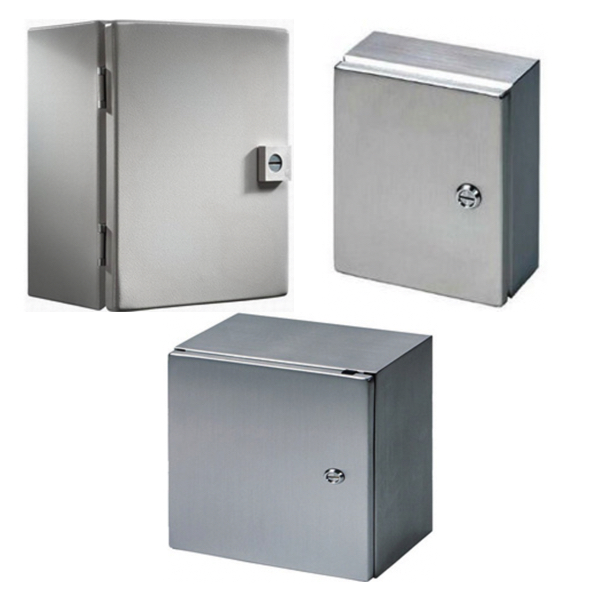Rittal Stainless Steel Enclosures

Rittal stainless steel enclosures are meant for demanding environments and are most suited for industrial use. They are made with high-quality stainless steel, using types like AISI 304 or AISI 316L that have excellent corrosion resistance. What makes them suitable for stringent environments is the rigorous testing that they are subjected to. This includes visual inspection, cleanliness testing, and physical testing in harsh environments with the hanging steel panel surface method, which tests for appearance and aesthetic flaws.
The stainless steel enclosures from Rittal are designed to be flexible and easy to use. Their main emphasis is on being as user-friendly as possible. For instance, the enclosures' features include doors that can be reversed, an ability to position the mounting plate anywhere inside the box, and a gland plate that can be mounted in either the top or the bottom of the box. All of this makes the enclosures easy to install and integrate into an existing system. These same features that help to make them user-friendly also make them customizable.
More Information about Rittal Stainless Steel Enclosures
Many of Rittal's enclosures offer IP66 and NEMA 4X ratings, meaning they are highly protected to the point of being dust-tight. They are also safeguarded against damage from powerful water jets. These high levels of protection make Rittal's enclosures perfect for use in washdown areas where they are constantly being hosed off or in outdoor environments that are exposed to any kind of weather. And no matter where you use them, they will keep your sensitive electronic and electrical components protected from the kinds of environmental threats that would render them non-functional.
Stainless Steel Enclosures: Type 304 vs 316
304 Stainless Steel
304 Stainless Steel contains 18% chromium and 8% nickel. It is the most widely used stainless steel within industrial applications. 304 stainless steel resists corrosion and oxidizing agents, which can cause rusting. However, it can tarnish. 304 stainless steel is very strong and can be bent without decreasing the strength, but it can be difficult to manipulate. Because of its corrosive resistance, 304 stainless steel enclosures are commonly used in dairy plants, mills, bakeries, and many other food processing industries.
316 Stainless Steel
316 Stainless Steel is a much higher grade of stainless steel containing 16% chromium, 10% nickel and 2% molybdenum, which significantly increases its resistance to pitting and cracking. It has increased corrosive resistance to chloride pollutants, such as salt. 316 stainless steel enclosures are ideal for areas there may have a high salt content, such as coastal areas and areas that use de-icing salts. This type of stainless steel is much more resistant to chemical environments that include sulphuric acid, phosphoric acid or many other chemicals. These types of stainless steel enclosures can be found in areas with high levels of corrosive agents, such as water, wastewater, chemical plants and fertilizer plants. Both 304 and 316 stainless steel enclosures have a NEMA rating of NEMA 4X because they are corrosion resistant, however it is important to remember to never use any chemicals that contain chlorine.

